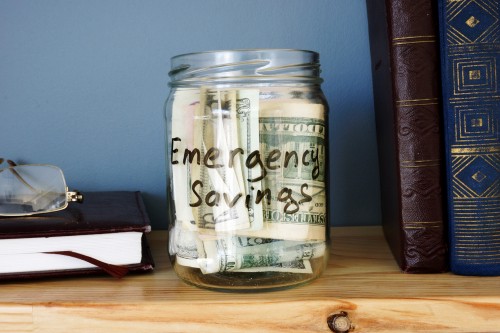When it comes to saving and borrowing, our financial system sends conflicting messages. An example: Many banks offer tips on building an emergency savings fund to buffer against loss of employment, a period of disability, or large unexpected expenses; and they offer promotional rates on CDs and money market accounts to attract savings. But the same banks’ credit card divisions promote use of new cards for vacations, holiday gifts, or large discretionary purchases — and some at zero interest or low promotional rates — to encourage borrowing.
Another example: most banks provide depositors with multiple accounts to keep saving and spending activities separate; but the same institutions offer “frictionless banking” that makes it easy to transfer funds from savings to checking in a matter of seconds.
But for many families, the underlying problem that leaves them without funds when emergencies arise may be too little friction rather than too much.
Keeping a cache of savings for use in emergencies is hard. And it’s hardest for low and moderate income households whose incomes are often volatile and who thus need to tap emergency savings most often. Building such a cache means regularly diverting a portion of income into it, avoiding the temptation to raid it for discretionary spending, and then replenishing it after a true emergency does arise. In comparison, borrowing to cover an emergency expense or an unexpected gap in earnings is much easier, but that can leave one with a hangover of debt and ill-prepared for the next emergency.
That so many households have too little saved for emergencies may partly have to do with banking and payment features that make it too effortless to access funds; and with accessing credit being too easy rather than too hard. (In fact, most users of payday loans, those expensive emergency loans of last resort, once had credit cards but used up their credit lines without being able to repay them.)
Many consumers keep their emergency funds “out of sight” at separate institutions from where they keep their checking accounts in order to prevent themselves from accessing the money too easily. Others cordon off their savings from temptation outside of the formal financial system. In most cases that means keeping a stash of cash hidden away where one isn’t likely to think about it. But some go to greater lengths to make their emergency savings hard to tap: In focus groups and interviews with LMI consumers, I’ve witnessed a woman who keeps a wad of bills frozen in a block of ice in her freezer to keep the funds nearby, but not available for immediate use; and a man who hands over his extra cash to his trustworthy but dour mother-in-law, who won’t return his funds without his providing serious justification. Even old-fashioned porcelain piggy banks that must be broken open (and ruined) to be used represent a form of self-imposed friction against non-emergency spending.
That so many consumers resort to multiple institutional relationships or home-grown methods to help them build, protect, selectively use, and replenish emergency funds reflects a shortcoming of the supermarket model that most banks have built in the age of frictionless banking. They don’t provide the basic means for compartmentalizing spending, saving, and borrowing that consumers need. It’s a failure that explains why FinTechs such as Digit and Earn, and a few others have managed to attract so many users, even though they don’t offer bank accounts themselves and even though they must charge monthly subscription fees for what they do: they assure users they can maintain an intentional level of friction between these parts of their financial lives.
Many employers, along with many of our largest financial institutions, offer automated savings features that are proving popular for building emergency or retirement savings. Retirement funds typically go into tax deferred IRAs or 401K’s that penalize early withdrawals. But, how can today’s financial supermarkets provide the compartmentalization many consumers need to build, safeguard, and replenish emergency funds?
Both consumers’ home-grown solutions and fintechs provide some hints about what emergency savings features innovators might want to test next:
- Let consumers add some speed bumps before they can access certain funds. Like the cash-on-ice solution one woman used, banks and credit unions could create emergency-only accounts that require a 24-hour waiting period before funds can be accessed. Initial requests account holders would make to themselves to access the funds would need to be confirmed by the person’s day-older self (who may determine she doesn’t need the funds after all).
- Let consumers designate an emergency buddy, whose electronic signature would be needed before funds can be accessed. Like the man who gave his funds to his mother-in-law for safekeeping, designating someone who will need to know the reason for a withdrawal might encourage accountholders to think twice before asking.
- Let consumers treat use of emergency funds as loans to themselves. When they draw funds in an emergency, they commit to repaying their funds in installments. They could even charge themselves interest so that their cache will grow with each use. Making borrowing from oneself first the default choice over using a credit card, will help consumers avoid the temptation to charge their way out of an emergency. And since this resembles the loans Self Lender, other fintechs, and many credit unions have devised for building credit, this approach to tapping and repaying emergency funds could also serve as a credit-building benefit.
Behavioral tools that help build and preserve emergency funds probably won’t work for families who just don’t earn enough to cover their basic expenses, or who are already overloaded with debt they took on to cover past emergencies. But many will be able to benefit from self-imposed friction that protects themselves from themselves.
Explore the Ends of the Month Series on the Financial Health Network website.

